Government Services
This (U.S. Federal) Government Services summation was compiled by the Editorial Staff of PSPA. This document is also available to the general-public within the “Articles” section of the PSPA-Research Library.
While the Federal Government comprises many departments, agencies, and branches we have focused particular attention on those areas of the government that often engages the private security industry, becomes working partners with the private security industry, and provides invaluable information and resources to the private security industry.
This summation includes what we believe to be relevant information, statistics, logos, and web-links.

Department of Labor (DOL) - The United States Department of Labor is a cabinet-level department of the U.S. federal government responsible for occupational safety, wage and hour standards, unemployment insurance benefits, re-employment services, and some economic statistics. The department is headed by the U.S. Secretary of Labor.
The purpose of the Department of Labor is to foster, promote, and develop the welfare of the wage earners, job seekers, and retirees of the United States; improve working conditions; advance opportunities for profitable employment; and assure work-related benefits and rights. In carrying out this mission, the Department of Labor administers and enforces more than 180 federal laws and thousands of federal regulations. These mandates and the regulations that implement them cover many workplace activities for about 10 million employers and 125 million workers.
The Department’s headquarters is housed in the Frances Perkins Building, named in honor of Frances Perkins, the Secretary of Labor from 1933 to 1945 and the first female cabinet secretary in U.S. history.
For more information, visit http://www.dol.gov/
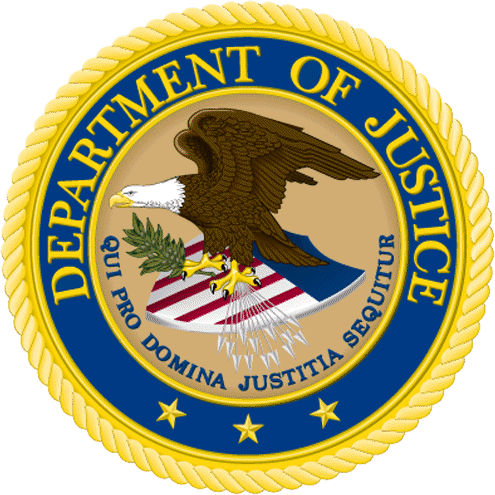
Department of Justice (DOJ) – The United States Department of Justice, also known as the Justice Department, is a federal executive department of the U.S. government, responsible for the enforcement of the law and administration of justice.
The purpose of the Department of Justice is to enforce the law and defend the interests of the United States according to the law; to ensure public safety against threats foreign and domestic; to provide federal leadership in preventing and controlling crime; to seek just punishment for those guilty of unlawful behavior; and to ensure fair and impartial administration of justice for all Americans.
The Department is headed by the Attorney General of the United States, who is nominated by the President and confirmed by the Senate and is a member of the Cabinet.
For more information, visit http://www.justice.gov/
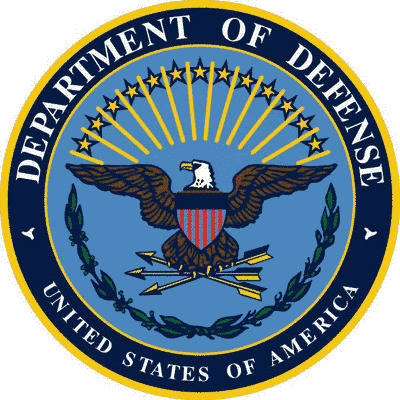
Department of Defense (DOD) – The United States Department of Defense is an executive branch department of the federal government of the United States charged with coordinating and supervising all agencies and functions of the government concerned directly with national security and the United States Armed Forces.
The purpose of the Department of Defense is to provide the military forces needed to deter war and to protect the security of our country. The department's headquarters is at the Pentagon. The Secretary of Defense is the principal defense policy advisor to the President. Under the direction of the President, the Secretary exercises authority, direction, and control over the Department of Defense.
The Department is also the largest employer in the world, with more than 2.13 million active duty service members as well as their support staff of civilian workers. Adding to the total is over 1.1 million National Guardsmen and Reservists from the four services, bringing the total to just over 3.2 million employees.
The Department of Defense is headed by the Secretary of Defense, a cabinet-level head who reports directly to the President of the United States. Beneath the Department of Defense are three subordinate military departments: the United States Department of the Army, the United States Department of the Navy, and the United States Department of the Air Force. In addition, four national intelligence services are subordinate to the Department of Defense: the Defense Intelligence Agency (DIA), the National Security Agency (NSA), the National Geospatial-Intelligence Agency (NGA), and the National Reconnaissance Office (NRO). Other Defense Agencies including the Defense Advanced Research Projects Agency (DARPA), the Defense Logistics Agency (DLA), the Missile Defense Agency (MDA), Defense Threat Reduction Agency (DTRA), and the Pentagon Force Protection Agency (PFPA), all of which are under the command of the Secretary of Defense. Military operations are managed by nine regional or functional Unified Combatant Commands. The Department of Defense also operates several joint services schools, including the National Defense University (NDU) and the National War College (NWC).
For more information, visit http://www.defense.gov/
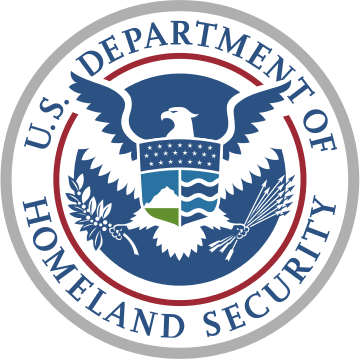
Department of Homeland Security (DHS) – The United States Department of Homeland Security is a cabinet department of the United States federal government, created in response to the September 11, 2001 attacks, aka (911) with the primary responsibilities of protecting the territory of the United States and protecting/responding to terrorist attacks, man-made accidents, and natural disasters. Job functions range from aviation and border security to emergency response, from cybersecurity analysis to chemical facility inspectors. Duties are wide-ranging, and the goal is clear - keep America safe.
In fiscal year 2001, DHS was allocated a budget of $98.8 billion and spent, net, $66.4 billion.
Whereas the Department of Defense is charged with military actions abroad, the Department of Homeland Security works in the civilian sphere to protect the United States within, at, and outside its borders. Its stated goal is to prepare for, prevent, and respond to domestic emergencies, particularly terrorism. On March 1, 2003, DHS absorbed the Immigration and Naturalization Service and assumed its duties. In doing so, it divided the enforcement and services functions into two separate and new agencies: Immigration and Customs Enforcement and Citizenship and Immigration Services. The investigative divisions and intelligence gathering units of the INS and Customs Service were merged forming Homeland Security Investigations. Additionally, the border enforcement functions of the INS, including the U.S. Border Patrol, the U.S. Customs Service, and the Animal and Plant Health Inspection Service were consolidated into a new agency under DHS: U.S. Customs and Border Protection. The Federal Protective Service falls under the National Protection and Programs Directorate.
With more than 250,000 employees, DHS is the third largest Cabinet department, after the Departments of Defense and Veterans Affairs. Homeland security policy is coordinated at the White House by the Homeland Security Council. Other agencies with significant homeland security responsibilities include the Departments of Health and Human Services, Justice, and Energy.
According to Peter Andreas, a border theorist, the creation of DHS constituted the most significant government reorganization since the Cold War and the most substantial reorganization of federal agencies since the National Security Act of 1947, which placed the different military departments under a secretary of defense and created the National Security Council and Central Intelligence Agency. DHS also constitutes the most diverse merger of federal functions and responsibilities, incorporating 22 government agencies into a single organization.
For more information, visit http://www.dhs.gov/
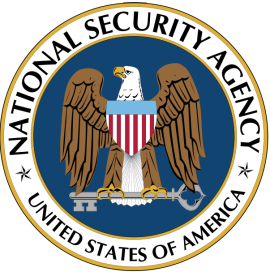
National Security Agency (NSA) – The United States National Security Agency is an intelligence organization of the United States government, responsible for global monitoring, collection, and processing of information and data for foreign intelligence and counterintelligence purposes – a discipline known as Signals intelligence (SIGINT). NSA is concurrently charged with protection of U.S. government communications and information systems against penetration and network warfare. Although many of NSA's programs rely on "passive" electronic collection, the agency is authorized to accomplish its mission through active clandestine means, among which are physically bugging electronic systems and allegedly engaging in sabotage through subversive software. Moreover, NSA maintains physical presence in a large number of countries across the globe, where its Special Collection Service (SCS) inserts eavesdropping devices in difficult-to-reach places. SCS collection tactics allegedly encompass "close surveillance, burglary, wiretapping, breaking and entering.”
Unlike the Defense Intelligence Agency (DIA) and the Central Intelligence Agency (CIA), both of which specialize primarily in foreign human espionage, NSA does not unilaterally conduct human-source intelligence gathering, despite often being portrayed so in popular culture. Instead, NSA is entrusted with assistance to and coordination of SIGINT elements at other government organizations, which are prevented by law from engaging in such activities without the approval of the NSA via the Defense Secretary. As part of these streamlining responsibilities, the agency has a co-located organization called the Central Security Service (CSS), which was created to facilitate cooperation between NSA and other U.S. military cryptanalysis components. Additionally, the NSA Director simultaneously serves as the Commander of the United States Cyber Command and as Chief of the Central Security Service.
Originating as a unit to decipher coded communications in World War II, it was officially formed as the NSA by Harry S. Truman in 1952. Since then, it has become one of the largest of U.S. intelligence organizations in terms of personnel and budget, operating as part of the Department of Defense and simultaneously reporting to the Director of National Intelligence.
NSA surveillance has been a matter of political controversy on several occasions, such as its spying on prominent anti-Vietnam war leaders or economic espionage. In 2013, the extent of the NSA's secret surveillance programs was revealed to the public by Edward Snowden. According to the leaked documents, the NSA intercepts the communications of over a billion people worldwide and tracks the movement of hundreds of millions of people using cellphones. It has also created or maintained security vulnerabilities in most software and encryption, leaving the majority of the Internet susceptible to cyber-attacks from NSA and other parties. Internationally, in addition to the various data sharing concerns that persist, research has pointed to the NSA's ability to surveil the domestic internet traffic of foreign countries through "boomerang routing."
For more information, visit http://www.nsa.gov/
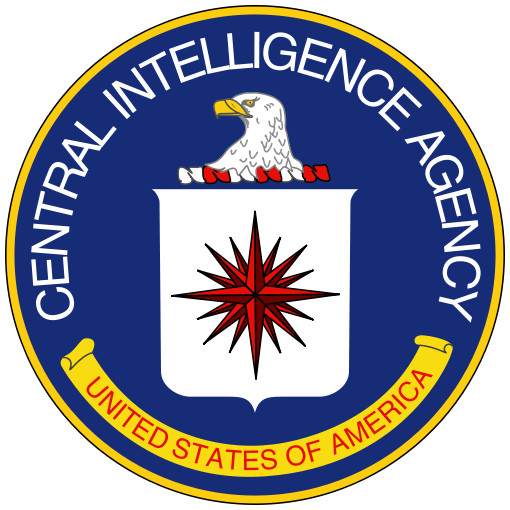
Central Intelligence Agency (CIA) – The United States Central Intelligence Agency is an external intelligence service of the U.S. Government, tasked with gathering, processing and analyzing national security information from around the world, primarily through the use of human intelligence (HUMINT). A component of the 17-member U.S. Intelligence Community (IC), CIA reports to the Director of National Intelligence.
The Central Intelligence Agency was created in 1947 with the signing of the National Security Act by President Harry S. Truman. The act also created a Director of Central Intelligence (DCI) to serve as head of the United States intelligence community; act as the principal adviser to the President for intelligence matters related to the national security; and serve as head of the Central Intelligence Agency.
Unlike the Federal Bureau of Investigation (FBI), which is an internal intelligence and security service, CIA has no domestic law enforcement function and is focused on overseas intelligence collection. As one of several IC members specializing in HUMINT operations, CIA serves as the national manager for coordination and de-confliction for HUMINT activities. Moreover, it is the only agency authorized to carry out and oversee covert action, unless the President finds that another agency is better suited for such operations. It can, for example, exert foreign political influence through its tactical divisions, such as the Special Activities Division.
In 2013, The Washington Post reported that CIA had the largest budget in the Intelligence Community, exceeding previous estimates. The CIA has increasingly taken on offensive roles, including covert paramilitary operations. One of its largest divisions, the Information Operations Center (IOC), has shifted focus from counter-terrorism to offensive cyber-operations.
Several CIA activities have attracted criticism. They include non-consensual human experiments, extraordinary rendition, enhanced interrogation techniques (torture), targeted killings, assassinations and the funding and training of militants who would go on to kill civilians and non-combatants.
For more information, visit http://www.cia.gov/

Federal Bureau of Investigation (FBI) – The United States Federal Bureau of Investigation is the domestic intelligence and security service of the United States, which simultaneously serves as the nation's prime Federal law enforcement organization. Operating under the jurisdiction of the U.S. Department of Justice, the FBI is concurrently a member of the U.S. Intelligence Community and reports to both the Attorney General and the Director of National Intelligence. A lead U.S. counterterrorism, counterintelligence, and criminal investigative organization, FBI has jurisdiction over violations of more than 200 categories of federal crime.
As an intelligence-driven and a threat-focused national security organization with both intelligence and law enforcement responsibilities, the mission of the FBI is to protect and defend the United States against terrorist and foreign intelligence threats, to uphold and enforce the criminal laws of the United States, and to provide leadership and criminal justice services to federal, state, municipal, and international agencies and partners. The FBI focuses on threats that challenge the foundations of American society or involve dangers too large or complex for any local or state authority to handle alone. In executing the following priorities, the FBI - as both a national security and law enforcement organization - will produce and use intelligence to protect the nation from threats and to bring to justice those who violate the law.
Although many of FBI's functions are unique, its activities in support of national security are comparable to that of the British MI5 and the Russian FSB. Unlike the Central Intelligence Agency (CIA), which has no law enforcement authority and is focused on intelligence collection overseas, FBI is primarily a domestic agency, maintaining 56 field offices in major cities throughout the United States, and more than 400 resident agencies in lesser cities and areas across the nation. At an FBI field office, a senior-level FBI officer concurrently serves as the representative of the Director of National Intelligence (DNI).
Despite its domestic focus, FBI also maintains a significant international footprint, operating 60 Legal Attaché (LEGAT) offices and 15 sub-offices in U.S. embassies and consulates across the globe. These overseas offices exist primarily for the purpose of coordination with foreign security services and do not usually conduct unilateral operations in the host countries. It is of note that the FBI can and does at times carry out secret activities overseas, just as the CIA has a limited domestic function; these activities generally require coordination across government agencies.
The FBI was established in 1908 as the Bureau of Investigation (BOI). Its name was changed to the Federal Bureau of Investigation (FBI) in 1935. The FBI headquarters is the J. Edgar Hoover Building, located in Washington, D.C.
For more information, visit http://www.fbi.gov/
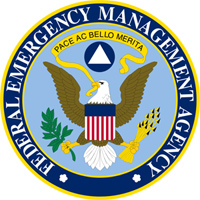
Federal Emergency Management Agency (FEMA) – The United States Federal Emergency Management Agency is an agency of the United States Department of Homeland Security, initially created by Presidential Reorganization Plan No. 3 of 1978 and implemented by two Executive Orders on April 1, 1979. The agency's primary purpose is to coordinate the response to a disaster that has occurred in the United States and that overwhelms the resources of local and state authorities. The governor of the state in which the disaster occurs must declare a state of emergency and formally request from the president that FEMA and the federal government respond to the disaster. FEMA also provides these services for territories of the United States, such as Puerto Rico. The only exception to the state's gubernatorial declaration requirement occurs when an emergency and/or disaster takes place on federal property or to a federal asset, for example; the 1995 bombing of the Alfred P. Murrah Federal Building in Oklahoma City, Oklahoma, or the Space Shuttle Columbia in the 2003 return-flight disaster.
While on-the-ground support of disaster recovery efforts is a major part of FEMA's charter, the agency provides state and local governments with experts in specialized fields and funding for rebuilding efforts and relief funds for infrastructure by directing individuals to access low interest loans, in conjunction with the Small Business Administration. In addition to this, FEMA provides funds for training of response personnel throughout the United States and its territories as part of the agency's preparedness effort.
For more information, visit http://www.fema.gov/

Secret Service (USSS) – The United States Secret Service is a federal law enforcement agency under the U.S. Department of Homeland Security. Until 2003, the Service was part of the U.S. Department of the Treasury.
The United States Secret Service is a federal law enforcement agency with headquarters in Washington, D.C., and more than 150 offices throughout the United States and abroad. The Secret Service was established in 1865, solely to suppress the counterfeiting of U.S. currency. Today, the agency is mandated by Congress to carry out dual missions: protection of national and visiting foreign leaders, and criminal investigations. The mission of the Secret Service is to ensure the security of our President, our Vice President, their families, the White House, the Vice President’s Residence, national and visiting world leaders, former Presidents, and events of national significance. The Secret Service also protects the integrity of our currency and investigates crimes against our national financial system committed by criminals around the world and in cyberspace.
The Secret Service's initial responsibility was to investigate counterfeiting of U.S. currency, which was rampant following the U.S. Civil War. The agency then evolved into the United States' first domestic intelligence and counterintelligence agency. Many of the agency's missions were later taken over by subsequent agencies such as the Federal Bureau of Investigation (FBI), Bureau of Alcohol, Tobacco, Firearms and Explosives (ATF), and Internal Revenue Service (IRS).
For more information, visit http://www.secretservice.gov/
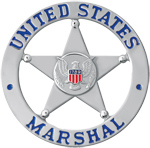
Marshals Service (USMS) – The United States Marshals Service is a U.S. federal law enforcement agency within the U.S. Department of Justice. The office of U.S. Marshals is the oldest American federal law enforcement agency. The U.S. Marshals office was created by the Judiciary Act of 1789. The Marshals Service is part of the executive branch of government, and is the enforcement arm of the U.S. federal courts. The U.S. Marshals are the primary agency for fugitive operations, responsible for prisoner transport, the protection of officers of the court, and for the effective operation of the judiciary. The Marshals service runs the Witness Protection Program, and serves federal arrest warrants.
For more information, visit http://www.justice.gov/marshals/
Uniformed Services
The United States “Uniformed Services” are defined by Title 10, and subsequently structured and organized by Title 10, Title 14, Title 33, and Title 42 of the United States Code. The seven (7) uniformed services are Army, Navy, Marine Corps, Air Force, Coast Guard, Public Health Service Commissioned Corps and the National Oceanic and Atmospheric Administration Commissioned Officer Corps. Each of the uniformed services is administratively headed by a federal executive department and its corresponding civilian cabinet leader.
The United States “Armed Forces” are the federal military forces of the United States of America. They consist of the Army, Navy, Marine Corps, Air Force, and Coast Guard. The United States has a strong tradition of civilian control of the military. The President of the United States is the military's overall head, and helps form military policy with the U.S. Department of Defense (DOD), a federal executive department, acting as the principal body by which military policy is carried out. The DOD is headed by the Secretary of Defense, who is a civilian and cabinet member. The Defense Secretary is second in the military's chain of command, just below the President, and serves as the principal assistant to the President in all DOD-related matters. To coordinate military action with diplomacy, the President has an advisory National Security Council headed by a National Security Advisor. Both the President and Secretary of Defense are advised by a seven-member Joint Chiefs of Staff, which includes the head of each of the Defense Department's service branches as well as the chief of the National Guard Bureau. Leadership is provided by the Chairman of the Joint Chiefs of Staff and the Vice Chairman of the Joint Chiefs of Staff. The Commandant of the Coast Guard is not a member of the Joint Chiefs of Staff.
All of the branches work together during operations and joint missions, under the Unified Combatant Commands, under the authority of the Secretary of Defense with the exception of the Coast Guard, which is under the administration of the Department of Homeland Security and receives its operational orders from the Secretary of Homeland Security. However, the Coast Guard may be transferred to the Department of the Navy by the President or Congress during a time of war. All five armed services are among the seven uniformed services of the United States, the two others being the U.S. Public Health Service Commissioned Corps (under the Department of Health and Human Services) and the National Oceanic and Atmospheric Administration Commissioned Officer Corps (under the Department of Commerce).
From the time of its inception, the military played a decisive role in the history of the United States. A sense of national unity and identity was forged as a result of victory in the First Barbary War and the Second Barbary War. Even so, the Founders were suspicious of a permanent military force and not until the outbreak of World War II did a large standing army become officially established. The National Security Act of 1947, adopted following World War II and during the Cold War's onset, created the modern U.S. military framework; the Act merged previously Cabinet-level Department of War and the Department of the Navy into the National Military Establishment (renamed the Department of Defense in 1949), headed by the Secretary of Defense; and created the Department of the Air Force and National Security Council.
The U.S. military is one of the largest militaries in terms of number of personnel. It draws its manpower from a large pool of paid volunteers; although conscription has been used in the past in various times of both war and peace, it has not been used since 1972. As of 2013, the United States spends about $554.2 billion annually to fund its military forces, and appropriates approximately $88.5 billion to fund Overseas Contingency Operations. Put together, the United States constitutes roughly 39 percent of the world's military expenditures. For the period 2010-14, SIPRI found that the United States was the world's biggest exporter of major arms, accounting for 31 per cent of global shares. The United States was also the world's eighth largest importer of major weapons for the same period. The U.S. Armed Forces has significant capabilities in both defense and power projection thanks to its advanced and powerful equipment and its widespread deployment of force around the world.
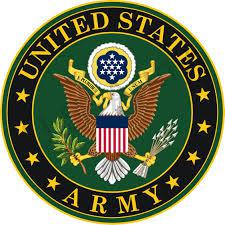
The United States Army (USA), officially designated as the "Army (or Armies) of the United States" (United States Constitution, Article 2, Section 2, Clause 1 and United States Code, Title 10, Subtitle B, Chapter 301, Section 3001) is the largest branch of the Armed Forces of the United States that performs land-based military operations; and is one of the seven Uniformed services of the United States. As the largest and senior branch of the U.S. Military, the modern U.S. Army has its roots in the Continental Army, which was formed (June 14, 1775) to fight the American Revolutionary War (1775 to 1783) - before the U.S. was established as a country. After the Revolutionary War, the Congress of the Confederation created the United States Army on June 3, 1784, to replace the disbanded Continental Army. The United States Army considers itself descended from the Continental Army, and dates its institutional inception from the origin of that armed force in 1775.
As a uniformed military service, the Army is part of the Department of the Army, which is one of the three military departments of the Department of Defense. The U.S. Army is headed by a civilian senior appointed civil servant, the Secretary of the Army (SECARMY), and by a chief military officer, the Chief of Staff of the Army (CSA). When the Chairman of the Joint Chiefs of Staff is an Army Officer, he is the senior ranking Officer in the Army, but retains no operational control of the Army. In the fiscal year 2011, the Regular Army (USA) reported strength of 546,057 soldiers; the Army National Guard (ARNG) reported 358,078 soldiers, and the United States Army Reserve (USAR) reported 201,166 soldiers; the combined-component strength of the U.S. Army was 1,105,301 soldiers. As a branch of the armed forces, the mission of the U.S. Army is "to fight and win our Nation's wars, by providing prompt, sustained, land dominance, across the full range of military operations and the spectrum of conflict, in support of combatant commanders."
For more information, visit http://www.goarmy.com

The United States Navy (USN) is the naval warfare service branch of the United States Armed Forces and one of the seven uniformed services of the United States. The U.S. Navy is the largest, most powerful navy in the world, with the highest combined battle fleet tonnage. The U.S. Navy has the world's largest aircraft carrier fleet, with ten in service, four in the reserve fleet, and three new class carriers under construction. The service has 325,143 personnel on active duty and 107,355 in the Navy Reserve. It has 271 deployable combat ships and more than 3,600 aircraft in active service as of June 2015[update].
The U.S. Navy traces its origins to the Continental Navy, which was established during the American Revolutionary War and was essentially disbanded as a separate entity shortly thereafter. It played a major role in the American Civil War by blockading the Confederacy and seizing control of its rivers. It played the central role in the World War II defeat of Japan. The 21st century U.S. Navy maintains a sizable global presence, deploying in such areas as East Asia, the Mediterranean, and the Middle East. It is a blue-water navy with the ability to project force onto the littoral regions of the world, engage in forward areas during peacetime, and rapidly respond to regional crises, making it an active player in U.S. foreign and defense policy.
The Navy is administratively managed by the Department of the Navy, which is headed by the civilian Secretary of the Navy. The Department of the Navy is itself a division of the Department of Defense, which is headed by the Secretary of Defense. The Chief of Naval Operations (CNO) is a four-star admiral and the senior naval officer of the Department of the Navy. However, the CNO may not be the highest ranking naval officer in the armed forces if the Chairman or the Vice Chairman of the Joint Chiefs of Staff are Navy officers, who by law, outrank the CNO.
For more information, visit http://www.navy.com
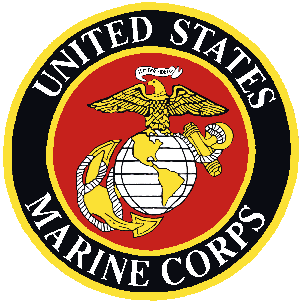
The United States Marine Corps (USMC) is a branch of the United States Armed Forces responsible for providing power projection from the sea, using the mobility of the U.S. Navy to rapidly deliver combined-arms task forces. The U.S. Marine Corps is one of the four branches in the U.S. Department of Defense as a member of the Joint Chiefs of Staff. It is one of the seven uniformed services of the United States.
The Marine Corps has been a component of the U.S. Department of the Navy since 1834, working closely with naval forces for training, transportation, and logistics. The USMC operates posts on land and aboard sea-going amphibious warfare ships around the world, and several of the Marines' tactical aviation squadrons, primarily Marine Fighter Attack squadrons, are also embedded in Navy carrier air wings and operate from the Navy's nuclear-powered aircraft carriers.
Two battalions of Continental Marines were formed on 10 November 1775 in Philadelphia as an Infantry force capable of fighting for independence both at sea and on shore. The role of the Corps has since grown and evolved, expanding to aerial warfare and earning popular titles such as "America's third air force" and "second land army.” The Marine Corps has distinguished itself as it has served in the majority of American wars, from its inception to the modern era, and attained prominence in the 20th century when its theories and practices of amphibious warfare proved prescient and ultimately formed the cornerstone of the Pacific theater of World War II.
By the mid-20th century, the U.S. Marine Corps had become a major theorist and the dominant practitioner of amphibious warfare. Its ability to rapidly respond on short notice to expeditionary crises gives it a strong role in the implementation and execution of American foreign policy. The USMC has around 194,000 active duty members and just under 40,000 reserve Marines as of 2010. It is the smallest of the U.S. Armed Forces within the U.S. Department of Defense.
For more information, visit http://www.marines.com
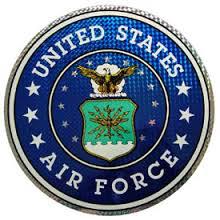
The United States Air Force (USAF) is the aerial warfare service branch of the United States Armed Forces and one of the seven American uniformed services. Initially part of the United States Army, the USAF was formed as a separate branch of the military on 18 September 1947 under the National Security Act of 1947. It is the most recent branch of the U.S. military to be formed, and is the largest and one of the world's most technologically advanced air forces. The USAF articulates its core functions as Nuclear Deterrence Operations, Special Operations, Air Superiority, Global Integrated ISR, Space Superiority, Command and Control, Cyberspace Superiority, Personnel Recovery, Global Precision Attack, Building Partnerships, Rapid Global Mobility and Agile Combat Support.
The U.S. Air Force is a military service within the Department of the Air Force, one of the three military departments of the Department of Defense. The USAF is headed by the civilian Secretary of the Air Force, who is appointed by the President with the advice and consent of the Senate. The highest-ranking military officer in the Department of the Air Force is the Chief of Staff of the Air Force who exercises supervision over Air Force units, and serves as a member of the Joint Chiefs of Staff. Air Force combat forces and mobility forces are assigned, as directed by the Secretary of Defense, to the Combatant Commanders, and neither the Secretary of the Air Force nor the Chief of Staff have operational command authority over them.
The U.S. Air Force provides air support for surface forces and aids in the recovery of troops in the field. As of 2012[update], the service operates more than 5,638 military aircraft, 450 ICBMs and 63 military satellites. It has a $140 billion budget with 309,339 active duty personnel, 185,522 civilian personnel, 71,400 Air Force Reserve personnel, and 106,700 Air National Guard personnel.
For more information, visit http://www.airforce.com
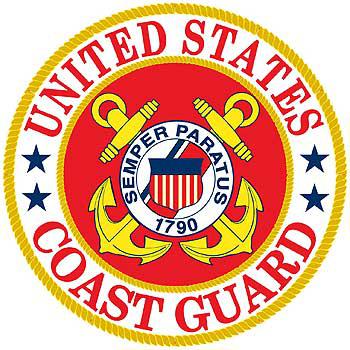
The United States Coast Guard (USCG) is a branch of the United States Armed Forces and one of the country's seven uniformed services. The Coast Guard is a maritime, military, multi-mission service unique among the U.S. military branches for having a maritime law enforcement mission (with jurisdiction in both domestic and international waters) and a federal regulatory agency mission as part of its mission set. It operates under the U.S. Department of Homeland Security during peacetime, and can be transferred to the U.S. Department of the Navy by the U.S. President at any time, or by the U.S. Congress during times of war. To date, this has happened twice, in 1917 and 1941, during World War I and World War II, respectively.
Created by Congress on 4 August 1790 at the request of Alexander Hamilton as the "Revenue Marine,” it is the oldest continuous seagoing service of the United States. As Secretary of the Treasury, Hamilton headed the Revenue Marine, whose original purpose was that of a collector of customs duties in the nation's seaports. By the 1860s the service was known as the U.S. Revenue Cutter Service and the term Revenue Marine gradually fell into disuse.
The modern Coast Guard was formed from the merger of the Revenue Cutter Service and the U.S. Life-Saving Service on January 28, 1915, as an organization under the U.S. Department of the Treasury. As one of the country's five armed services, the Coast Guard has been involved in every U.S. war from 1790 up to the Iraq War and the War in Afghanistan. As of 2012[update] the Coast Guard had approximately 42,000 men and women on active duty, 7,900 reservists, 32,000 auxiliary and 8,700 full-time civilian employees. In terms of size, the U.S. Coast Guard by itself is the world's 12th largest naval force.
The Coast Guard's legal authority differs from the other four armed services: it operates simultaneously under Title 10 of the U.S. Code and its other organic authorities, e.g. Titles 6, 14, 19, 33, 46, etc. Because of its legal authority, the Coast Guard can conduct military operations under the U.S. Department of Defense or directly for the President in accordance with Title 14 USC 1–3. The Coast Guard's enduring roles are maritime safety, security, and stewardship. To carry out those roles the Coast Guard has 11 statutory missions as defined in 6 U.S.C. § 468, which include enforcing U.S. law in the world's largest exclusive economic zone of 3.4 million square miles (8,800,000 km2). The Coast Guard's motto is Semper Paratus (English: Always ready).
For more information, visit http://www.gocoastguard.com/
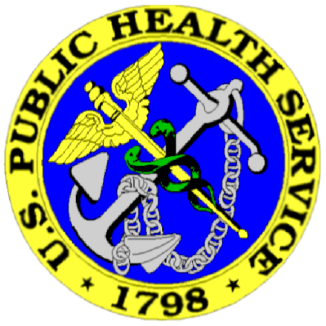
The United States Public Health Service Commissioned Corps (PHSCC) also referred to as the Commissioned Corps of the United States Public Health Service, is the federal uniformed service of the U.S. Public Health Service (PHS) and is one of the seven uniformed services of the United States.
Along with the National Oceanic and Atmospheric Administration Commissioned Officer Corps, the Public Health Service Commissioned Corps is one of two uniformed services that consist only of commissioned officers and has no enlisted or warrant officer ranks, although warrant officers have been authorized for use within the service. Officers of the PHS are classified as noncombatants, unless directed to serve as part of the armed forces by the President or detailed to a service branch of the armed forces. Members of the PHSCC wear the same uniforms as the United States Navy and the United States Coast Guard (when assigned to the Coast Guard) with special corps insignia, and hold ranks equivalent to those of naval officers. Officers of the PHSCC receive their commissions through the PHSCC's direct commissioning program.
As with its parent division, the PHS, the PHSCC is under the direction of the United States Department of Health and Human Services. The PHSCC is led by the Surgeon General who holds grade of vice admiral. The Surgeon General reports directly to the Assistant Secretary for Health who may hold the rank of admiral if he or she is a serving member of the PHSCC.
For more information, visit http://www.usphs.gov/

The National Oceanic and Atmospheric Administration Commissioned Officer Corps, also referred to as the (NOAA Corps), is one of seven federal uniformed services of the United States, and operates under the National Oceanic and Atmospheric Administration (NOAA), a scientific agency within the Department of Commerce. The NOAA Corps is one of two uniformed services – the other is the United States Public Health Service Commissioned Corps – that consist only of commissioned officers, with no enlisted or warrant officer ranks.
Established in 1970, the NOAA Corps is the successor to the United States Coast and Geodetic Survey Corps (1917-1965) and the Environmental Science Services Administration Corps (ESSA Corps) (1965 -1970).
The NOAA Commissioned Officer Corps traces its roots to the United States Coast and Geodetic Survey. The Coast and Geodetic Survey's predecessor, the United States Survey of the Coast – renamed the United States Coast Survey in 1836 – was founded in 1807 under President Thomas Jefferson. Until the American Civil War, the Coast Survey was manned by civilian personnel working with United States Army and United States Navy officers. During the Civil War (1861-1865), Army officers were withdrawn from Coast Survey duty, never to return, while all but two Navy officers also were withdrawn from Coast Survey service for the duration of the war. Since most men of the Survey had Union sympathies, most stayed on with the Survey rather than resigning to serve the Confederate States of America; their work shifted in emphasis to support of the U.S. Navy and Union Army, and these Coast Surveyors are the professional ancestors of today's NOAA Corps. Those Coast Surveyors supporting the Union Army were given assimilated military rank while attached to a specific command, but those supporting the U.S. Navy operated as civilians and ran the risk of being executed as spies if captured by the Confederates while working in support of Union forces. After the war, U.S. Navy officers returned to duty with the Coast Survey, which was given authority over geodetic activities in the interior of the United States in 1871 and accordingly was renamed the United States Coast and Geodetic Survey in 1878.
With the outbreak of the Spanish–American War in April 1898, the Navy again withdrew all of its officers from Coast and Geodetic Survey assignments. They returned after the war, but the system of U.S. Navy officers and men crewing the Survey 's ships that had prevailed for most of the 19th century came to an end when the appropriation law approved on June 6, 1900 provided for "all necessary employees to man and equip the vessels" instead of Navy personnel. The law took effect on July 1, 1900; at that point, all Navy personnel assigned to the Survey 's ships remained aboard until the first call at each ship 's home port, where they transferred off, with the Survey reimbursing the Navy for their pay accrued after July 1, 1900.
From July 1900, the Coast and Geodetic Survey continued as an entirely civilian-manned organization until after the United States entered World War I in April 1917. To avoid the dangers that Coast Survey personnel had faced during the Civil War of being executed as spies if captured by the enemy, the Coast and Geodetic Survey Corps was established on May 22, 1917, giving Coast and Geodetic Survey officers a commissioned status so that under the laws of war, they could not be executed as spies if they were captured while serving as surveyors on a battlefield. The creation of the Coast and Geodetic Survey Corps also ensured that in wartime a set of officers with technical skills in surveying could be rapidly assimilated into the United States armed forces so that their skills could be employed in military and naval work essential to the war effort. Before World War I ended in November 1918, over half of all Coast and Geodetic Survey Corps officers had served in the U.S. Army, U.S. Navy, or United States Marine Corps, performing duty as artillery orienteering officers, minelaying officers in the North Sea (where they were involved in the laying of the North Sea Mine Barrage), troop transport navigators, intelligence officers, and on the staff of General John "Black Jack" Pershing.
The Coast and Geodetic Survey Corps returned to peacetime scientific pursuits after the war. Its first flag officer was Rear Admiral Raymond S. Patton, who was promoted from captain to rear admiral in 1936.
When the United States entered World War II in December 1941, the Coast and Geodetic Survey Corps again suspended its peacetime activities to support the war effort, often seeing front-line service. Over half of all Coast and Geodetic Survey officers were transferred to the U.S. Army, U.S. Navy, U.S. Marine Corps, or United States Army Air Forces, seeing duty in North Africa, Europe, and the Pacific as artillery surveyors, hydrographers, amphibious engineers, beach-masters, instructors at service schools, and in a wide variety of technical positions. They also served as reconnaissance surveyors for a worldwide aeronautical charting effort, and a Coast and Geodetic Survey officer was the first commanding officer of the Army Air Forces Aeronautical Chart Plant at St. Louis, Missouri. Three officers who remained in Coast and Geodetic Survey service were killed during the war, as were eleven other Survey personnel.
After the war ended in August 1945, the Coast and Geodetic Survey again returned to peacetime scientific duties, although a significant amount of its work in succeeding years was related to support of military and naval requirements during the Cold War. When the Coast and Geodetic Survey was transferred to the newly established Environmental Science Services Administration on July 13, 1965, control of the corps was transferred from the Survey to ESSA itself, and accordingly the corps was re-designated the Environmental Science Services Administration Corps (ESSA Corps). Rear Admiral H. Arnold Karo was promoted to vice admiral on July 13, 1965 to help lead in the establishment of the new ESSA; he served as the first Deputy Administrator of ESSA, and as a vice admiral he remains the highest-ranking officer in the combined history of the Coast and Geodetic Survey Corps, ESSA Corps, and NOAA Corps. Rear Admiral James C. Tison was the first director of the ESSA Corps.
The ESSA was reorganized and expanded to become the new National Oceanic and Atmospheric Administration on October 3, 1970, and the ESSA Corps was re-designated the National Oceanic and Atmospheric Administration Corps (NOAA Corps). Rear Admiral Harley D. Nygren was appointed as the first director of the new NOAA Corps.
In 1972 the NOAA Corps became the first uniformed service of the U.S. Government to recruit women on the same basis as men. On June 1, 2012, the NOAA research vessel RV Gloria Michelle, a boat manned by two NOAA Corps personnel, became the first vessel in the history of NOAA or its ancestor organizations to have an all-female crew.
For more information, visit http://www.noaacorps.noaa.gov/
United States Criminal Justice
As outlined above, the federal government of the United States empowers a wide range of law enforcement agencies to maintain law and public order related to matters affecting the country as a whole. To conclude our summation, we have included below a brief overview of the U.S. Criminal Justice System and the various branches of Law Enforcement on a federal, state, other, municipal, and city level.
Criminal Justice on a “Federal” Level
Federal police possess enforcement authority as given to them under various parts of the United States Code (U.S.C.). Federal law enforcement officers are authorized to enforce various laws generally only at the federal level. A few agencies have broad federal enforcement powers, but most enforce only narrow portions of federal law. In some cases, they may be empowered to enforce state and local law as well. These agencies may generally have nationwide jurisdiction for enforcement of designated federal law but specifically their power is geographically limited. Most federal agencies are limited by the U.S. Code to investigating matters that are explicitly within the power of the federal government. Some federal investigative powers have become broader in practice, since the passage of the USA PATRIOT Act in October 2001.
The Department of Justice is the most prominent collection of law enforcement agencies, and handles most law enforcement duties at the federal level. It includes the United States Marshals Service (USMS), the Federal Bureau of Investigation (FBI), the Drug Enforcement Administration (DEA), the Bureau of Alcohol, Tobacco, Firearms & Explosives (ATF), the Federal Bureau of Prisons (BOP), and others to name just a few. The Department of Homeland Security (DHS) includes the United States Secret Service (USSS) and U.S. Immigration and Customs Enforcement (ICE), which includes Enforcement Removal Operations (ERO), Homeland Security Investigations (HSI) and the U.S. Customs Service. There is also U.S. Customs and Border Protection (CBP) which includes the Office of Air and Marine, the Office of Border Patrol, and the Office of Field Operations. CBP's components have the primary responsibility of enforcing customs and immigration laws at and between the ports of entry of the United States; the Federal Protective Service (FPS) is responsible for federal law enforcement in federal buildings and properties. Including elements of the U.S. Coast Guard and the U.S. Transportation Security Administration.
While the majority of federal law enforcement employees work for the departments of Justice and Homeland Security, there are dozens of other federal law enforcement agencies under the other executive departments, as well as under the legislative and judicial branches of the federal government.
Criminal Justice on a “State” Level
Most states operate statewide government agencies that provide law enforcement duties, including investigations and state patrols. They may be called State Police, State Patrol, or Highway Patrol, and are normally part of the state Department of Public Safety. In addition, the Attorney General's office of each state has their own state bureaus of investigation. In Texas, the Texas Ranger Division fulfills this role though they have their history in the period before Texas became a state.
Various departments of State Governments may have their own enforcement division such as Capitol Police, Campus Police, State Hospitals, Departments of Correction, Water Police, environmental (fish and game/wildlife) Game Wardens or Conservation Officers (who have full police powers and statewide jurisdiction). In Colorado, for instance, the Department of Revenue has its own investigative branch, as do many of the state funded universities.
Also known as parishes and boroughs, county law enforcement is provided by Sheriffs' Departments or Offices and County police.
County police tend to exist only in metropolitan counties and have countywide jurisdiction. In some areas, there is a sheriff's department that only handles minor issues such as service of papers such as a constable in other areas, along with security for the local courthouse. In other areas, there are no county police and the local sheriff is the exclusive law enforcement agency and acts as both sheriff and county police, which is much more common than there being a separate county police force.
County Police in the United States tend to fall into three broad categories:
Full-Service - provide the full spectrum of police services to the entire county, irrespective of local communities, and may provide contractual security police services to special districts within the county.
Limited Service - provide services to unincorporated areas of the county (and may provide services to some incorporated areas by contract), and usually provide contractual security police services to special districts within the county.
Restricted Service - provide security police to county owned and operated facilities and parks. Some may also perform some road patrol duties on county built and maintained roads, and provide support to municipal police departments in the county. Some northeastern states maintain county detectives in their county attorneys' offices.
Sheriffs in the United States tend to fall into three broad categories:
Full Service - the most common type, provide all traditional law-enforcement functions, including countywide patrol and investigations irrespective of municipal boundaries.
Limited Service - along with the above, perform some type of traditional law-enforcement function such as investigations and patrol. This may be limited to security police duties on county properties (and others by contract) to the performance of these duties in unincorporated areas of the county, and some incorporated areas by contract.
Restricted Service - provide basic court related services such as keeping the county jail, transporting prisoners, providing courthouse security and other duties with regard to service of process and summonses that are issued by county and state courts. The sheriff also often conducts auction sales of real property in foreclosure in many jurisdictions, and is often also empowered to conduct seizures of chattel property to satisfy a judgment. In other jurisdictions, these civil process duties are performed by other officers, such as a marshal or constable. In Texas, the Sheriff’s Office is normally the agency responsible for handling mental health calls. If the situation is dangerous, a Sheriff’s Deputy has the power to take a person to a hospital on a mental health commitment immediately. However, if the situation is not actively dangerous a warrant must be sought. With the rise in mental health units across the state, the Texas Crisis Intervention Team (CIT) Association was formed.
Criminal Justice on an “Other” Level
There are other types of specialist police departments with varying jurisdictions. Most of these serve special-purpose districts and are Special district police. In some states, they serve as little more than security police, but in states such as California, special district forces are composed of fully sworn peace officers with statewide authority.
These agencies can be transit police, school district police, campus police, airport police, park police, or police departments responsible for protecting government property such as the Los Angeles General Services Police. Some agencies, such as the Port Authority of New York and New Jersey Police Department, have multi-state powers. There are also some private (non-governmental) agencies, such as the Co-op City Department of Public Safety.
Criminal Justice on a “Municipal” Level
Municipal police range from one-officer agencies (sometimes still called the town marshal) to the 40,000 men and women of the New York City Police Department. Most municipal agencies take the form (Municipality Name) Police Department. Many individual cities and towns will have their own police department, with larger communities typically having larger departments with greater budgets, resources, and responsibilities.
Metropolitan departments, such as the Las Vegas Metropolitan Police Department, have jurisdiction covering multiple communities and municipalities, often over a wide area typically coterminous (having the same boundaries) with one or more cities or counties. Metropolitan departments have usually been formed by a merger between local agencies, typically several local police departments and often the local sheriff's department or office. They are formed in efforts to provide greater efficiency by centralizing command and resources and to resolve jurisdictional problems. Often, metropolitan departments are formed in communities experiencing rapid population growth and urban sprawl, or in neighboring communities too small to afford individual police departments. Some county sheriff's departments, such as the Los Angeles County Sheriff's Department, are contracted to provide full police services to local cities within their counties.
Criminal Justice on a “City” Level
Law enforcement in the United States is one of three major components of the criminal justice system of the United States, along with courts and corrections. Although there exists an inherent interrelatedness between the different groups that make up the criminal justice system based on their crime deterrence purpose, each component operates independently from one another. However, the judiciary is vested with the power to make legal determinations regarding the conduct of the other two components.
Apart from maintaining order and service functions, the purpose of policing is the investigation of suspected criminal activity and the referral of the results of investigations and of suspected criminals to the courts. Law enforcement, to varying degrees at different levels of government and in different agencies, is also commonly charged with the responsibilities of deterring criminal activity and of preventing the successful commission of crimes in progress; the service and enforcement of warrants, writs and other orders of the courts.
Law enforcement agencies are also involved in providing first response to emergencies and other threats to public safety; the protection of certain public facilities and infrastructure; the maintenance of public order; the protection of public officials; and the operation of some correctional facilities (usually at the local level).
Textbooks and scholars have identified three (3) primary City Police Agency functions. The following is cited from The American System of Criminal Justice, by George F. Cole and Christopher E. Smith, 2004, 10th edition, Wadsworth/Thomson Learning:
1. Maintain Order. This is the broad mandate to keep the peace or otherwise prevent behaviors, which might disturb others. This can deal with things ranging from a barking dog to a fistfight. By way of description, Cole and Smith note that police are usually called-on to "handle" these situations with discretion, rather than deal with them as strict violations of law, though of course their authority to deal with these situations are based in violations of law.
2. Law enforcement. Those powers are typically used only in cases where the law has been violated and a suspect must be identified and apprehended. Most obvious instances include robbery, murder, or burglary. This is the popular notion of the main police function, but the frequency of such activity is dependent on geography and season.
3. Service. Services may include rendering first aid, providing tourist information, guiding the disoriented, or acting as educators (on topics such as preventing drug use). Cole and Smith cited one study that showed 80% of all calls for police assistance did not involve crimes, but this may not be the case in all parts of the country. Because police agencies are traditionally available year-round, 24 hours a day, citizens call upon police departments not only in times of trouble, but also when just inconvenienced. As a result, police services may include roadside auto assistance, providing referrals to other agencies, finding lost pets or property, or checking locks on vacationers' homes.






